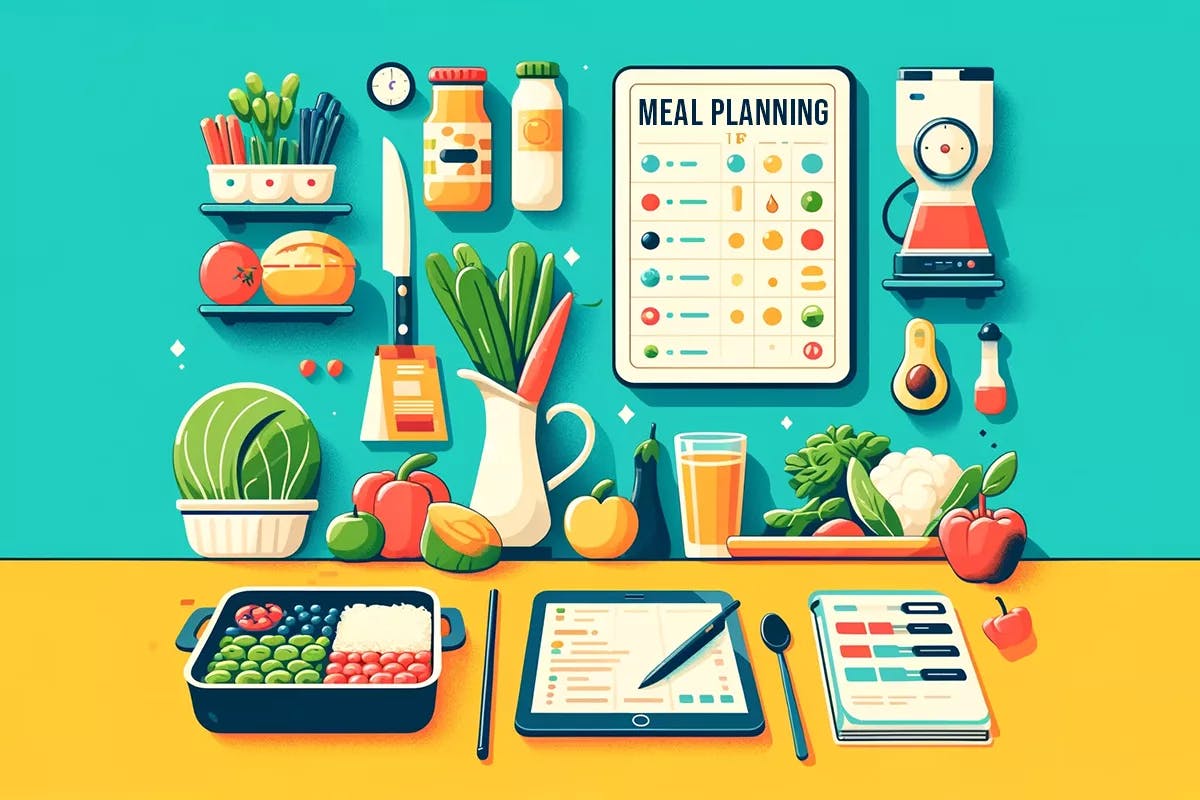Planning your meals is a good way to keep a healthy lifestyle by introducing a variety of food to your diet. Meal planning also saves time and money and makes daily cooking easier. In the US, 29% of people plan their meals for the whole week, so it’s now becoming a trend.
While you may think you’re about to spend more money, a healthy prep doesn’t have to be expensive. By practicing proven tips, you will surely learn how to plan a meal on a budget.
How to Meal Plan on a Budget
1. Watch Out for Sales and Discounts
Sales and discounts may significantly impact your food budget. So, while preparing meals, check your local grocery store’s weekly fliers and promotions.
Consider stacking up on these pantry staples when they are on sale:
- canned goods
- grains
- frozen vegetables
Next, look for loyalty programs and digital coupons offered by supermarkets to maximize your savings. If chicken meat is on sale, you can include them in multiple meals throughout the week. Finally, cheap meal plans like chicken salads, stir-fry, and tacos are great additions to your weekly menu.
2. Batch Cooking and Meal Prep
It will save you time and money to cook in bulk and plan meals ahead of time, especially on busy days. Set aside a few hours on the weekend to make a lot of basic items. You can choose everyday foods like:
- Grilled chicken
- Rice
- Roasted vegetables
Once prepped, divide food into portions and store them in containers. This is for an easy grab-and-go throughout the week. Use your budgeting calendar app for meal planning to track dates when you should start preparing a batch.
3. Prepare Meatless Meals
Meals with no meat are both budget-friendly and environmentally sustainable. So, try experimenting with plant-based protein sources such as these to make hearty and nutritious dishes:
- beans
- lentils
- chickpeas
- tofu
Meatless meals can be as enjoyable and economical. For instance, you can create tasty black bean tacos that you can eat for the first half of the week. Here’s what you need:
- seasoned black beans
- canned corn kernels
- avocado
- salsa
Just mix everything, wrap it, pop it in the microwave, and it’s good to go.
4. Choose Whole Foods over Processed Items
Go for whole foods instead of processed food because they offer more nutrients per calorie. Make sure to add these foods to your meal plan for better health and long-term savings:
- fresh produce
- whole grains
- lean proteins
Create your own granola bars instead of buying them. Nuts, seeds, cereals, and dried fruits work. Learning how to eat healthy on a budget meal plan will definitely save you a lot of cash.
5. Use the Leftovers
According to StopWaste, 40% of US food is wasted. Making leftovers cost-effective and environmentally friendly. Create new recipes from leftovers with a little imagination. Instead of just reheating, try turning leftovers into new dishes. Leftover rice can be fried rice with eggs and mixed vegetables.
If you have leftover vegetables, you can dice them and add them to omelets or frittatas. You can also use the vegetables for a simple, tasty pasta primavera. Here’s what you’ll need:
- vegetables
- cooked pasta
- olive oil
- garlic
- Parmesan cheese
Toss this together in a pan and top with parmesan cheese. This dish can last for up to 5 days, just make sure to store it in the fridge.
6. Consider Store Brands
Store brands often have the same quality as big brands but cost less. Check prices and see if you can get store-brand versions of frequently purchased items. How much you can save without sacrificing anything good may surprise you.
Choose the cheaper store-brand canned vegetables. Most people don’t notice the difference in taste or quality, but the money you save adds up.
7. Get Your Family Members Involved
With the whole family helping, planning and making meals can be more fun and educational. Kids should be able to help choose recipes, develop shopping plans, and carry out easy tasks related to cooking. Getting everyone involved is a great way to teach important cooking skills and promote a sense of cooperation and duty.
Create a weekly family gathering to discuss meal ideas and plan the following week’s meals. Let everyone in the family add their favorite recipes or food items to the meal plan. Together, learn how to plan meals on a budget.
Related articles:
- How To Cater For 100 Guests On A Budget
- 8 Ways to Build an Outdoor Kitchen on a Budget
- 15 Practical Tips for Clean Eating on a Budget
Start Planning Meals on a Budget
Following these meal-planning ideas will help you learn how to plan a meal on a budget. Remember, don’t hold back on trying new things when you cook. Smart choices and planning ahead can help you eat well without spending a lot of money.



